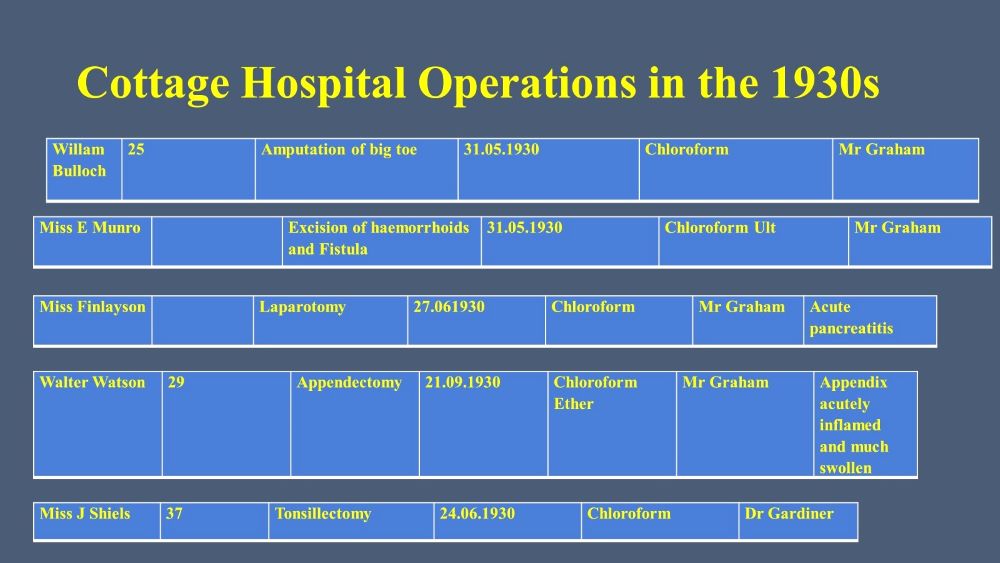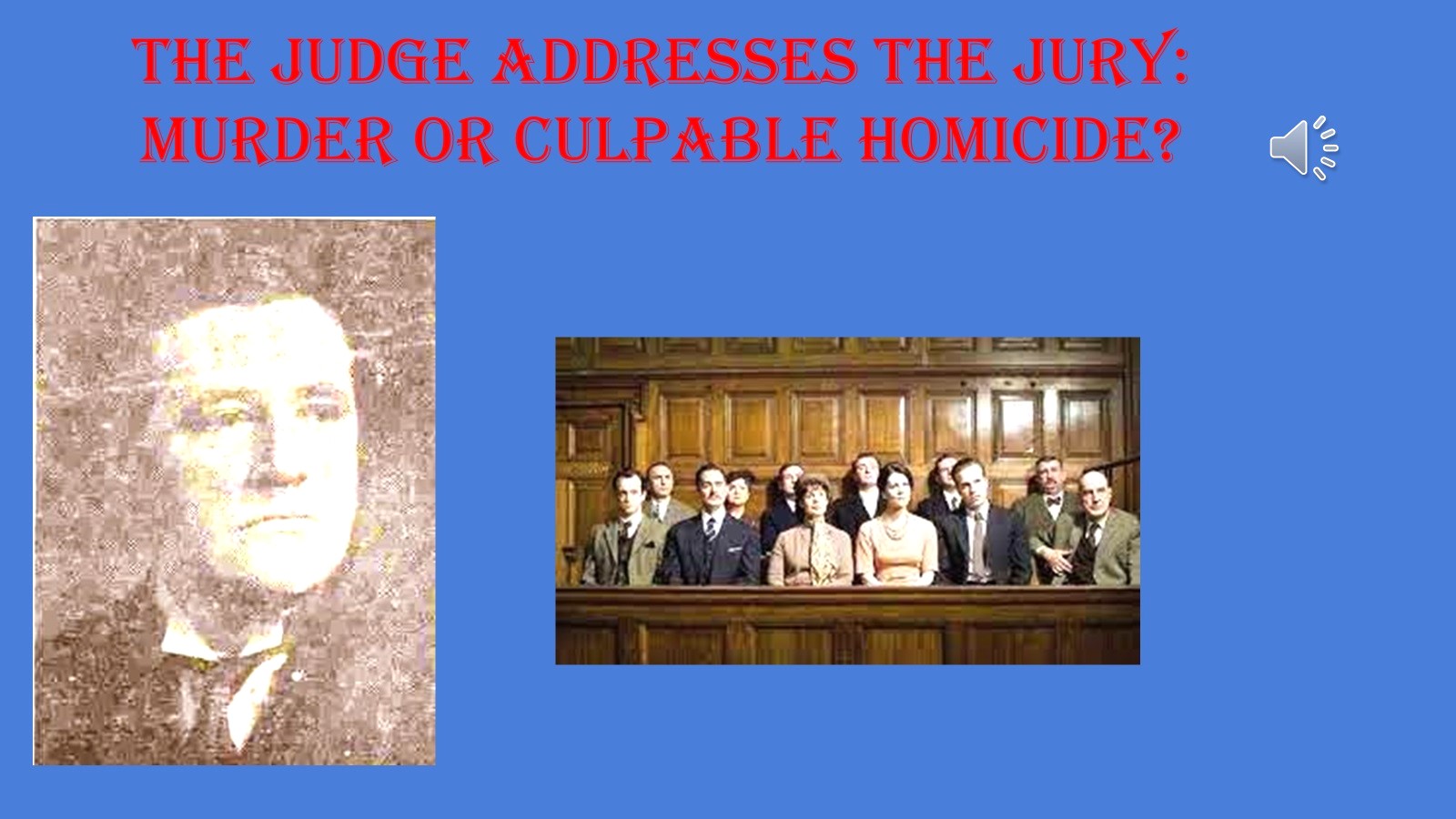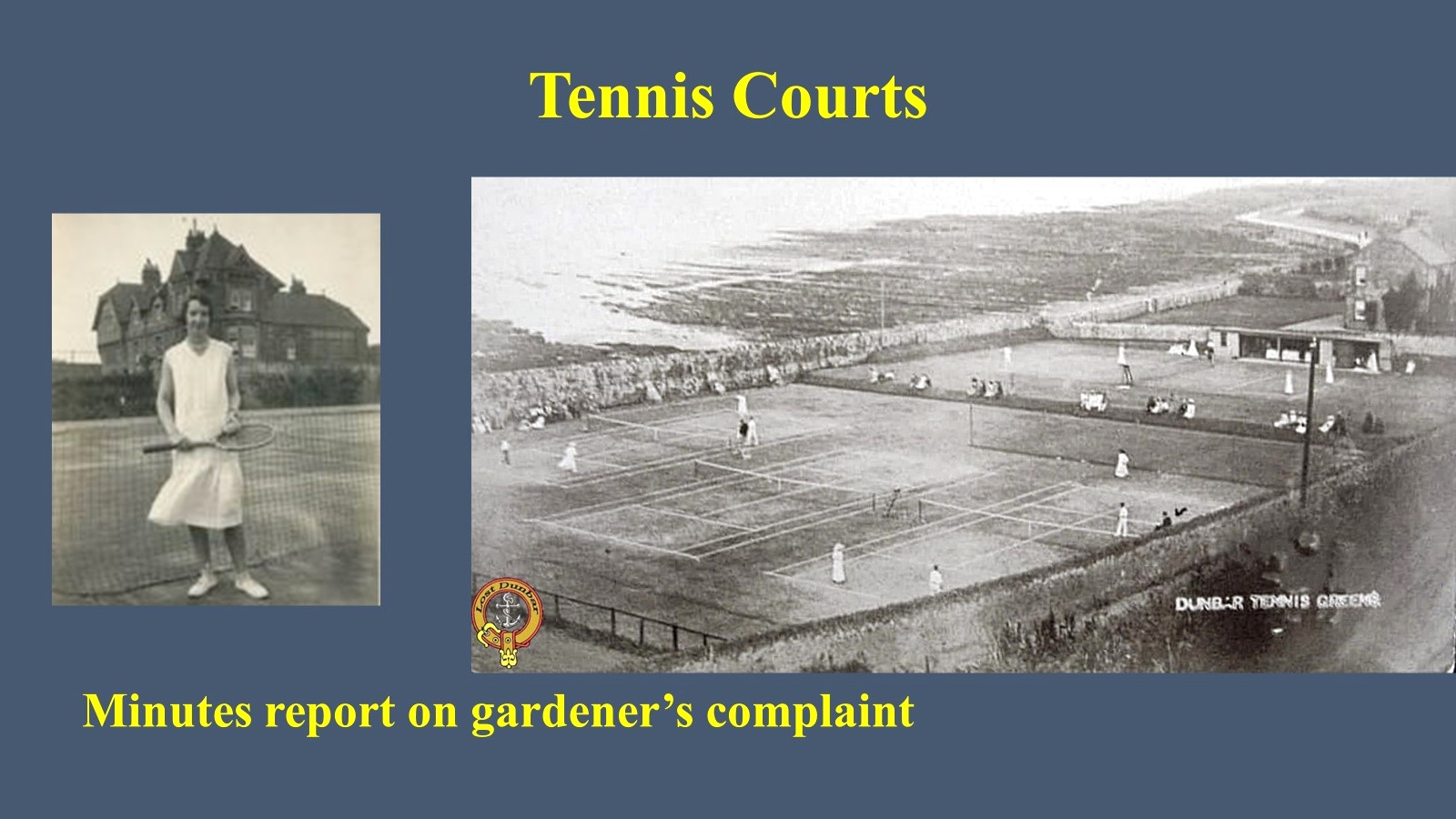The final talk in the DDHS 2023-2024 season was entitled Dunbar Cottage Hospital: Operations, Incidents and Memories and delivered by Dr James Herring. Three of the slides from the presentation are included, with accompanying text, below.

The hospital had its own theatre and voluntary surgeons, such as Mr Graham, travelled from Edinburgh to do sometimes quite large operations. The slide above shows the range of operations done. The details come from the hospital’s Operations Book, extracts of which were given to the speaker by librarians in the University of Edinburgh. In 1934, 50 major and 100 minor operations carried out by voluntary surgeons. Cottage hospitals carried out such large operations locally in the 1930s, as there were many fewer large hospitals than there are today. One of the examples above, the laparotomy is described as a surgical incision (cut) into the abdominal cavity. This operation is performed to examine the abdominal organs and aid diagnosis of any problems, including abdominal pain. This may have involved the surgeon opening up the patient’s chest and abdomen, and was therefore a large operation. Many people in Dunbar remember having their tonsils removed in the hospital in the 1950s and 1960s.

The slide above was part of a documentary presentation by the speaker, in which the words of the trial judge were spoken by Kenneth Stanton. This followed a simulated Gaumont British News report featuring the speaker as a reporter. The major incident related to the Cottage Hospital happened in 1940, when a serving soldier attacked his wife with an axe at 5 Boroughdales and the woman was taken to the hospital, where she died. The soldier was tried at the High Court in Edinburgh but a sympathetic judge found him guilty of culpable homicide. The judge was clearly biased against the woman, who was having an affair with another soldier. This trial reflected a society at war favouring a serving soldier, who was represented by a King’s Counsel barrister. It also reflected the status of women at this time.

In 1948, the hospital became part of the new National Health Service and prior to this, George Low & Son carried out an inventory of the hospital buildings, ground and contents. The slide above (best enlarged) shows the tennis courts which were part of the hospital grounds. The photo on the left of the slide shows a female tennis player standing in front of the hospital, which was housed in Yorke Lodge, a substantial stone built mansion. The photo on the right shows an aerial view of the courts and in the enlarged slide, you will see women and men playing tennis as well as a structure on the right, presumably used for changing rooms. The gardener’s complaint was that tennis balls were landing on his flower beds and large vegetable patch, and players were stepping into the garden to retrieve lost balls. The hospital committee suggested that the gardener charge the tennis players four pence for each dozen balls, but did not explain how the gardener might put this into practice! The vegetable garden provided the hospital with all the vegetables it needed throughout the year from the 1930s to 1973, when the hospital closed. Yorke Lodge was demolished in 1984 and Lammermuir House (on East Links Road) was built on the grounds of the former hospital.
You must be logged in to post a comment.